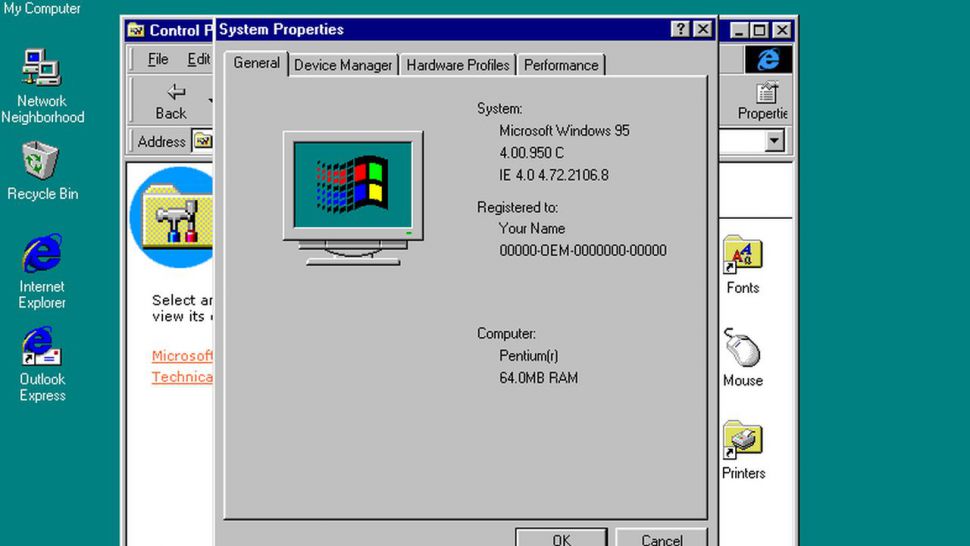A comprehensive history of the PC
A detailed look at the emergence and evolution of the personal computer
Windows 95 makes its debut
August 1995 would see the biggest change to the computing landscape (RedHat was formed?‐Ed) yet: Windows 95. On the technical side, Windows 95 was designed around 32-bit preemptive multitasking, compatibility with existing DOS and Windows 3.x programs, and new tech such as DirectX, and Plug and Play (Pray–Ed) support.
Windows 95 truly established Microsoft. Computing had become mainstream and Microsoft was a household name. It was over for competitors: Commodore had gone bankrupt, Atari hit the wall and Apple was barely surviving.
IBM still had OS/2, with its newer Warp release from a year prior, but this only supported Win 3.x applications and sank into irrelevancy.
When Windows 98 arrived it fixed many of the teething problems of Windows 95, with a more stable system, better hardware support and UI enhancements.
This was also when the anti-trust lawsuits began, as Microsoft bundled Internet Explorer with Windows, itself already bundled with new computers.

Now Microsoft would dominate not just PCs, but internet use too. 3D accelerator cards – such as 3dfx’s Voodoo 2, Nvidia’s Riva TNT, and ATI’s Rage series – would be a defining feature of the late 90s. 3D acceleration brought a new era of PC gaming.
Where previous games relied on the CPU for all rendering, these new graphics cards added a GPU (graphics processing unit), which took the graphical processing burden away from the CPU. This resulted in substantially faster gaming and stunning graphical effects.
Are you a pro? Subscribe to our newsletter
Sign up to the TechRadar Pro newsletter to get all the top news, opinion, features and guidance your business needs to succeed!
Although 3dfx tried to corner the market with its proprietary Glide API, it eventually lost out to competitors who used market standards such as DirectX and Silicon Graphics’s OpenGL. The ultimate card of the 90s would be 1999’s Nvidia GeForce 256. AMD went from strength to strength.
In 1996, AMD released the K5, the first Pentium rival, but 1997 brought true success with the K6. This was a proper rival to the new Pentium II, but could work in older Socket 7 motherboards, too. The K6 series was wildly successful, with its famous 3DNow! instructions and cheaper prices.
The successive K6-2 and K6-3 chips continued to rival advancing Pentium II and III models, and would eventually dominate most of the sub-$1,000 market. We would end the decade with 1999’s K7 Athlon, the first retail CPU to break the 1GHz mark.
The 90s were a time of survival of the fittest, ending with one dominant OS and two CPU makers. Even the GPU market was contracting to just Nvidia and ATI.
In addition to Linux Format launching, the precursor to the Linux Foundation being formed and Corel Linux, the new century would start with Windows 2000 (arguably the best release of Windows) and Windows Me (arguably the worst).
Windows 2000 was based on Microsoft’s NT platform, finally moving Windows away from DOS, while remaining mostly backward compatible with Windows 9x and DOS programs.
October 2001 saw the release of Windows XP, using the same NT base as 2000, with a revamped interface, and improved multimedia capabilities. While previous versions of Windows were pretty drab, XP was colourful.
XP made piracy much harder, being the first Windows to have an activation scheme. The mix of relative stability and a friendly GUI made Windows XP one of the most popular OSes of all time.
Linux developers take the desktop more seriously and Ubuntu is released 2004 and people start to say “year of the Linux desktop”!